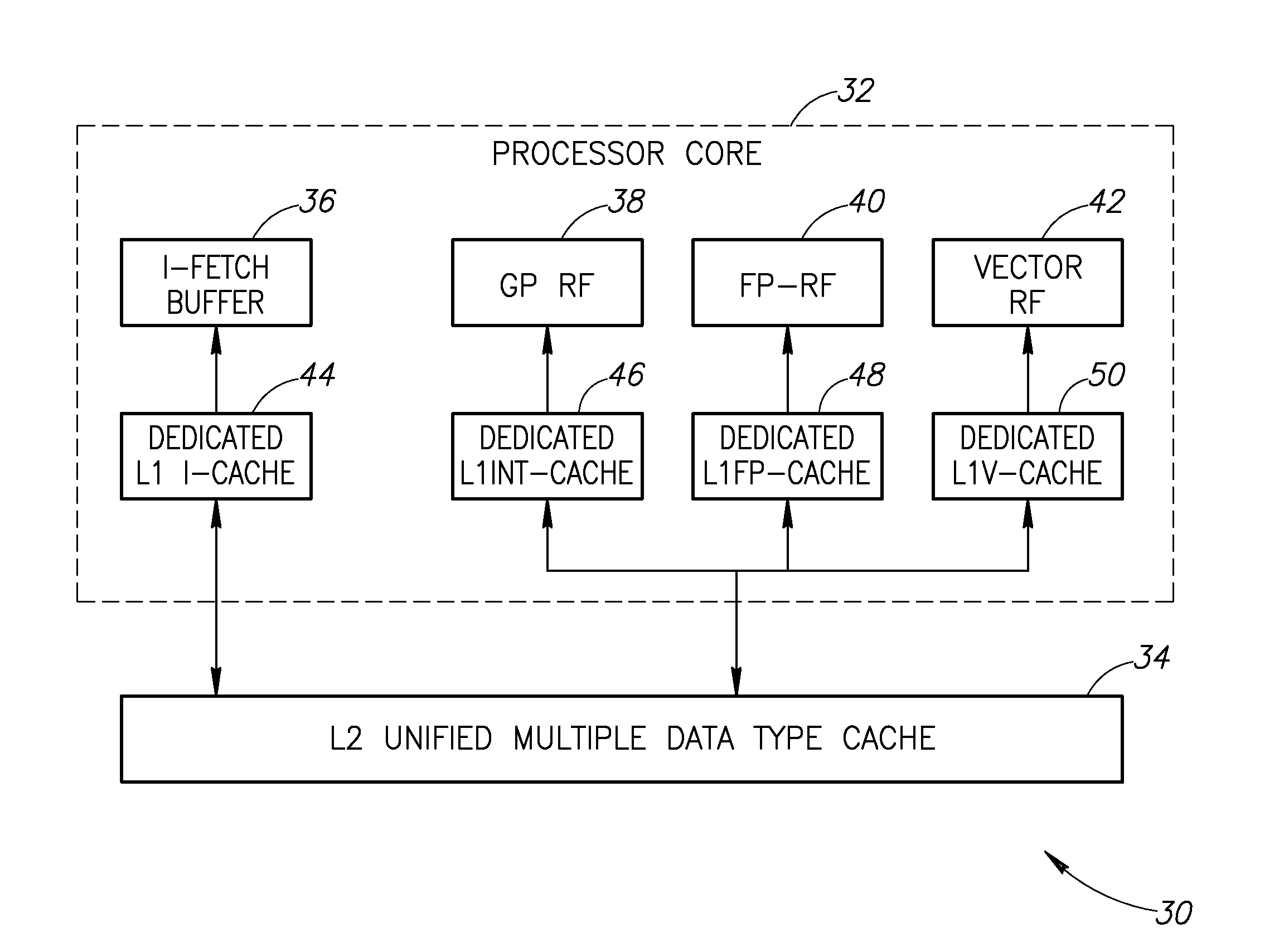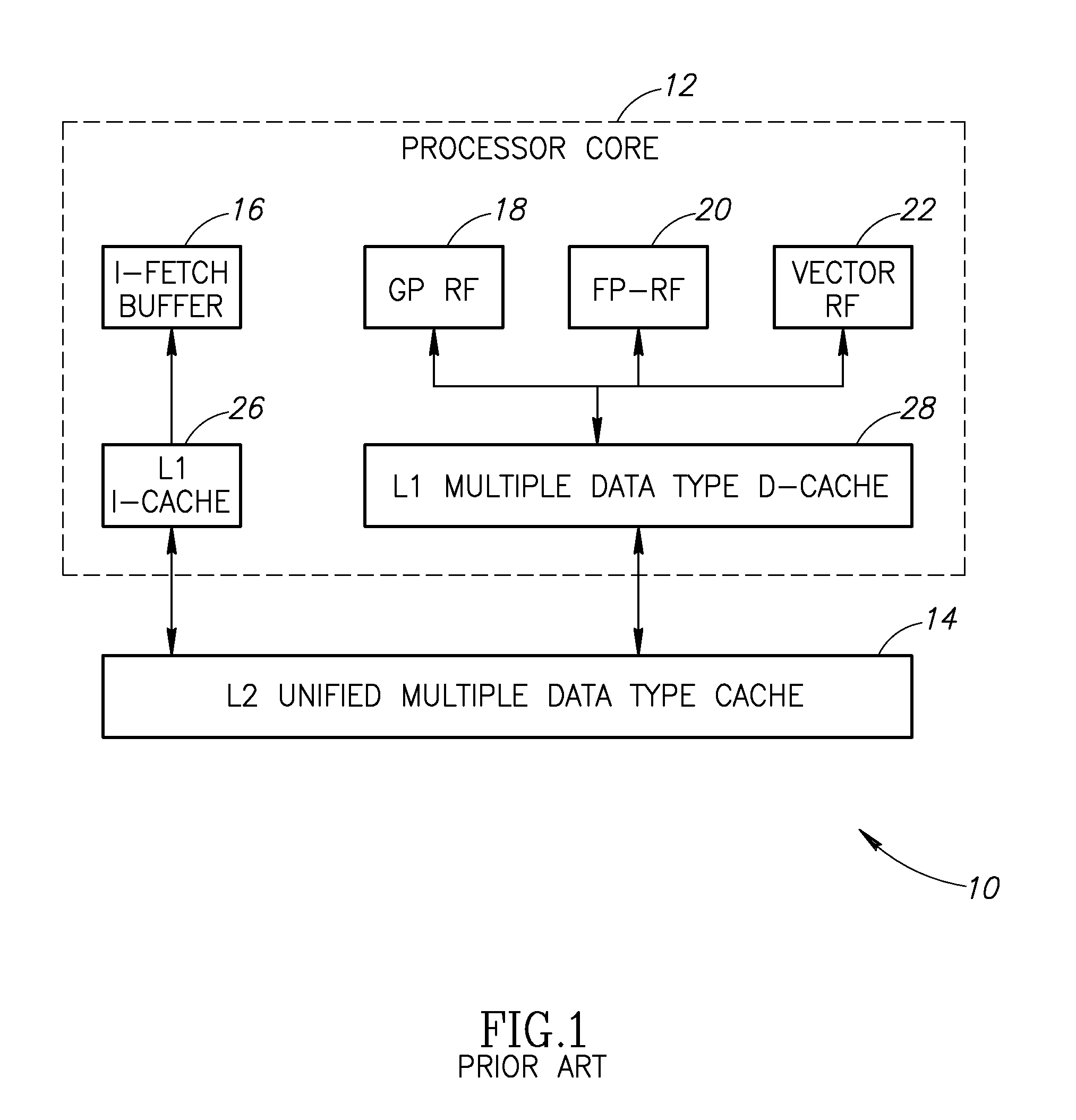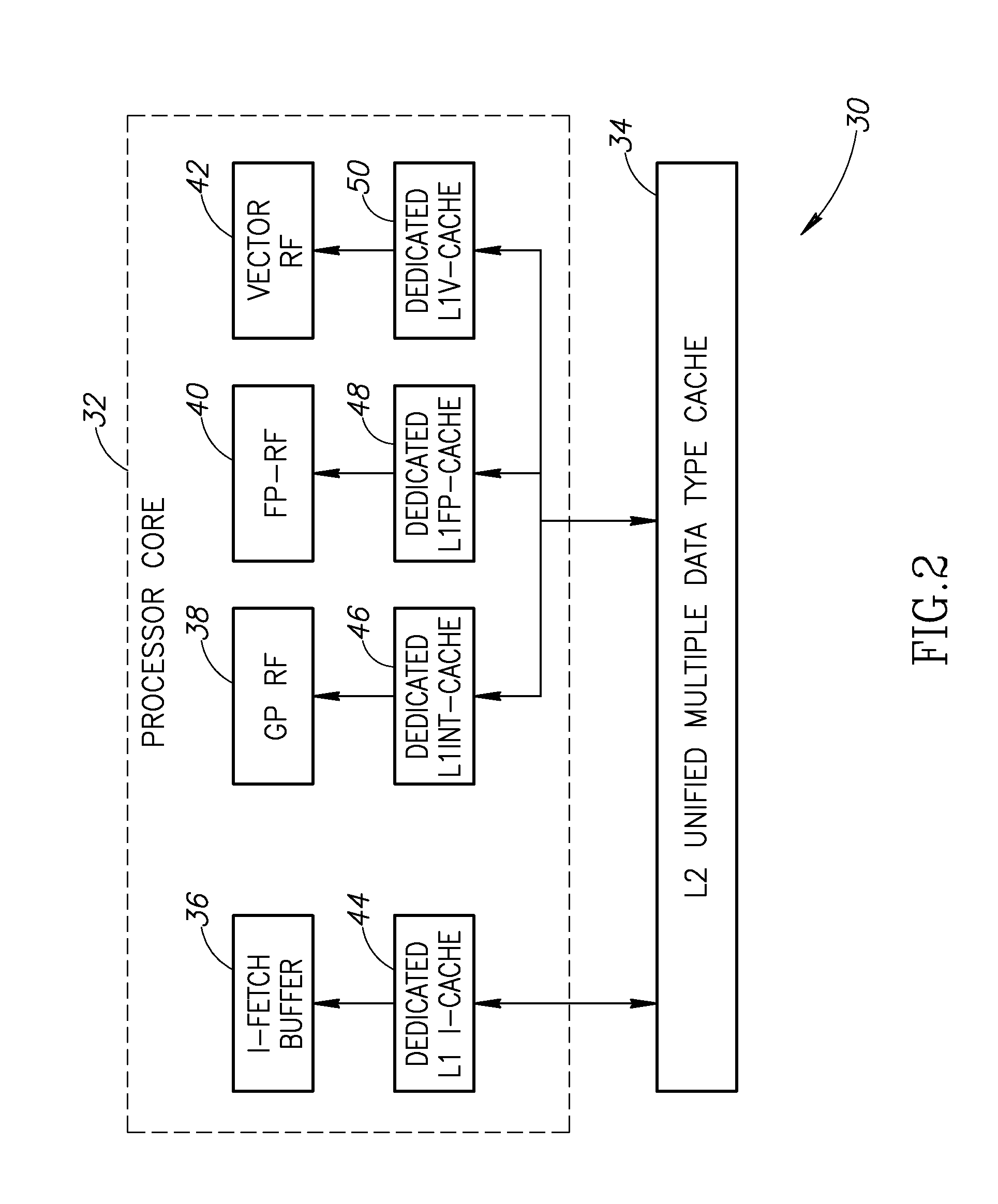Apparatus for and Method of Implementing Multiple Content Based Data Caches
a cache and content technology, applied in the field of processor design, can solve the problems of increasing the bottleneck of overall system performance of memory, the inability of the l1 data cache to contain the flow of data needed by the processor, and the bottleneck of the instruction pipeline, so as to reduce the delay of wires and optimize performan
- Summary
- Abstract
- Description
- Claims
- Application Information
AI Technical Summary
Benefits of technology
Problems solved by technology
Method used
Image
Examples
Embodiment Construction
Notation Used Throughout
[0024]The following notation is used throughtout this document:
TermDefinitionALUArithmetic Logic UnitCPUCentral Processing UnitD-CacheData CacheEAEffective AddressFPFloating PointFPUFloating Point UnitFUFunctional UnitGPGeneral PurposeI-CacheInstruction CacheI-FetchInstruction Fetch BufferInt-CacheInteger CacheLDLoadLSBLeast Significant BitMMUMemory Management UnitMSBMost Significant BitOOOOut Of OrderRFRegister FileSMTSimultaneous Multi ThreadingSTStoreV-CacheVector Cache
DETAILED DESCRIPTION OF THE INVENTION
[0025]The present invention provides a solution to the prior art problems discussed hereinabove by partitioning the L1 data cache into several different caches, with each cache dedicated to a specific data type. To further optimize performance, each individual L1 data cache is physically located close to its associated register files and functional unit. This reduces wire delay and reduces the need for signal repeaters.
[0026]By implementing seperate L1 d...
PUM
 Login to View More
Login to View More Abstract
Description
Claims
Application Information
 Login to View More
Login to View More - R&D
- Intellectual Property
- Life Sciences
- Materials
- Tech Scout
- Unparalleled Data Quality
- Higher Quality Content
- 60% Fewer Hallucinations
Browse by: Latest US Patents, China's latest patents, Technical Efficacy Thesaurus, Application Domain, Technology Topic, Popular Technical Reports.
© 2025 PatSnap. All rights reserved.Legal|Privacy policy|Modern Slavery Act Transparency Statement|Sitemap|About US| Contact US: help@patsnap.com



